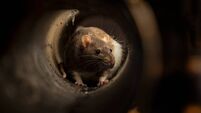Rural areas at far higher risk from Cryptosporidium
Figures from the Health Protection Surveillance Centre (HPSC) show the highest rate of 2004-2006 cases were in the HSE West, a figure partially explained by the Galway outbreak in 2005.
In the HSE West region, there were 22.5 cases per 100,000 population.
The next highest rate, 18.2 per 100,000, was in the HSE Midlands, where there was an acute community outbreak in 2004.
Across the country, incidence rates of between 8.7-13.4 per 100,000 people were reported annually in the period 2004-2006.
However, the number of cases in the east were just 1.5 per 100,000 population.
A survey of water-borne outbreaks of cryptosporidium in 16 European countries three years ago found that Ireland had the highest incidence.
The authors of the report, Patricia Garvey and Paul McKeown, suggested the increased likelihood of contact with farm animals and poor water treatment most likely explain the higher figures.
Furthermore, in rural areas, many householders are served by private wells, which do not have controls in place against the disease.
Cryptosporidium causes diarrhoeal disease that can be particularly severe in people with weakened immune systems. It only became a notifiable human disease in Ireland in 2004.
As a result, understanding of the illness and its causes is only beginning to emerge, the authors said.
“Cryptosporidium is an important gastrointestinal pathogen in Ireland, with much still to be learned about its epidemiology here,” they stated in the Eurosurveillance journal where the research was published.
Cryptosporidium is resistant to chlorine and so is linked to public swimming pools. However authors suggest that drinking water and person-to-person spread are probably the most common sources of infection in this country.
Irish people living near lands where manure was spread regularly are at higher risk however, the research found.
The study also showed three-quarters of all cases relate to children under the age of 10. However, they warned the figure could be explained by the fact that parents are more likely to go to a doctor with a sick child than for themselves and by lower immunity.
However, the authors note that sometimes in Irish laboratories, technicians refuse to take samples from the under-10s due to a lack of resources and this could mean that the real figure is even higher.
The likelihood the age threshold is being applied frequently is supported by figures from the 2005 Galway outbreak, when 40% of cases related to adults — unlike the 25% suggested by these national figures.













